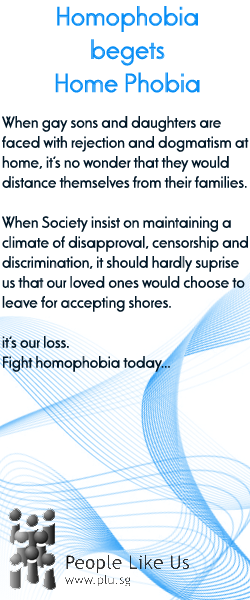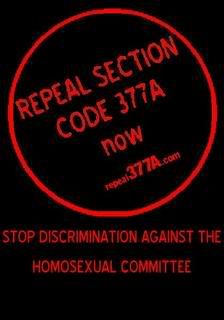The Gay Community. One hears this phrase thrown about a lot – it’s often used to refer to us as the collective group, with a whole secret political agenda to take over the world and threaten the institution of marriage and family.
But flippant ironies aside, what does it really mean? Let’s start with the dictionary definition – that’s always a good place to start.
Community (plural communities )
1. Group of people sharing a common understanding who reveal themselves by using the same language, manners, tradition and law.
2. The condition of having certain attitudes and interests in common.
So then comes the question - is there a gay community?
Going by the first definition, the answer would likely be yes. The gay community does share a common understanding – that we are interested in men, of course.
Do we reveal ourselves using the same language, manners, tradition and law? Most definitely. The laws of fashion and aesthetics govern us all. Be it wearing tailored bermudas, sashaying down Tanjong Pagar, or spending small fortunes on personal grooming, any gay man worth his salt is definitely able to identify another.
However, while we do live in a common fashion, the second definition does not seem to hold. As a whole, the condition of having certain attitudes and interests in common does not seem to be true.
The gay community seems to be fractured into many sub communities, each pursuing their own individual aims and interests. From the profit motive of saunas and clubs, to the personal sexual escapade that one pursues through various channels, there seems to be little concern for a motive outside of one's personal realm.
Very rarely do we see the entire community moving together towards one purposeful aim, in one coordinated direction. Be it setting up a business, climbing the corporate ladder in our careers, or pursuing our next relationship, these seem to be our main, private concerns.
Greater social issues, such as HIV and AIDS, minority discrimination within our own community, and even gay rights itself, often take a backseat. While there have been commendable efforts in each of these areas, to say that the entire community made a concerted, unified stand is far from the truth.
The question is, why?
It's easy to throw the usual rhetoric of how human beings are selfish, and that gay men are especially selfish things, concerned only with themselves. But if this were so, any greater cause would be doomed to fail under the pressure of petty human selfishness.
Such a generalization does not hold up, when one takes a broader perspective. Gay rights movements show a communal sense of purpose not present in the Singaporean context. The problem does not lie with our sexuality, or our innate human selfishness.
Perhaps this might be due to the lack of a truly unifying symbol or theme.
Symbols are powerful things. The West has pride parades, Stonewall, days of silence for GLBT victims and Ian McKellen. These act as rallying points, symbols that foster a sense of community that supports each other in times of need.
However, these symbols have not proven themselves to be as effective in an Asian context..
The Rainbow Flag, for example, is a wholesale import from Western movements, and many that I've spoken to find that they do not relate to this symbol.
It's hardly surprising. After all, the rainbow flag also hails from the very same culture that stereotypes Asian gay men as being weak, timid, unassertive, and effeminate. The rallying points that the Western culture use are not necessarily translatable into an Asian context.
Undeed, how many of us know the history behind the Rainbow Flag, and what each colour of the Rainbow Flag stands for?
(For those of you who would like to know, the Flag was first flown in the San Francisco Gay Freedom Day Parade on June 25th 1978. The eight colours, Pink, Red, Orange, Yellow, Green, Turquoise, Blue, and Violet represented Sexuality, Life, Healing, Sunlight, Nature, Magic, Serenity and Spirit respectively.)
So what symbol does Singapore have? 377A?
Much has been talked about the debate against 377A being a milestone in the advancement of gay rights. Serving as a rallying point for gay rights, Singapore was propelled on to the world map of gay rights advancements.
Everyone knows about it. But how many people do staunchly support its repeal? I've come across a large number of people who are simply content with the government's placatory statement of not actively prosecuting.
Which is rather dismal, considering that there are also a fair amount of straight men and women who support the repeal.
A symbol needs to be created by the people, for the people, to have a rallying effect. The intricate web of traditions and representations needs to be understood by the people, in order for the symbol to be effective.
And maybe, with such a symbol flying high, we too can have the sense of pride and communal acceptance when we say that we are, indeed, part of the gay community of Singapore
2008-08-29
Does the Gay Community really exist? Does the local community lack an effective gay symbol?
Labels: Trevvy 0 comments
Posted by
RatedX
at
12:20 AM
![]()




0 comments:
Post a Comment